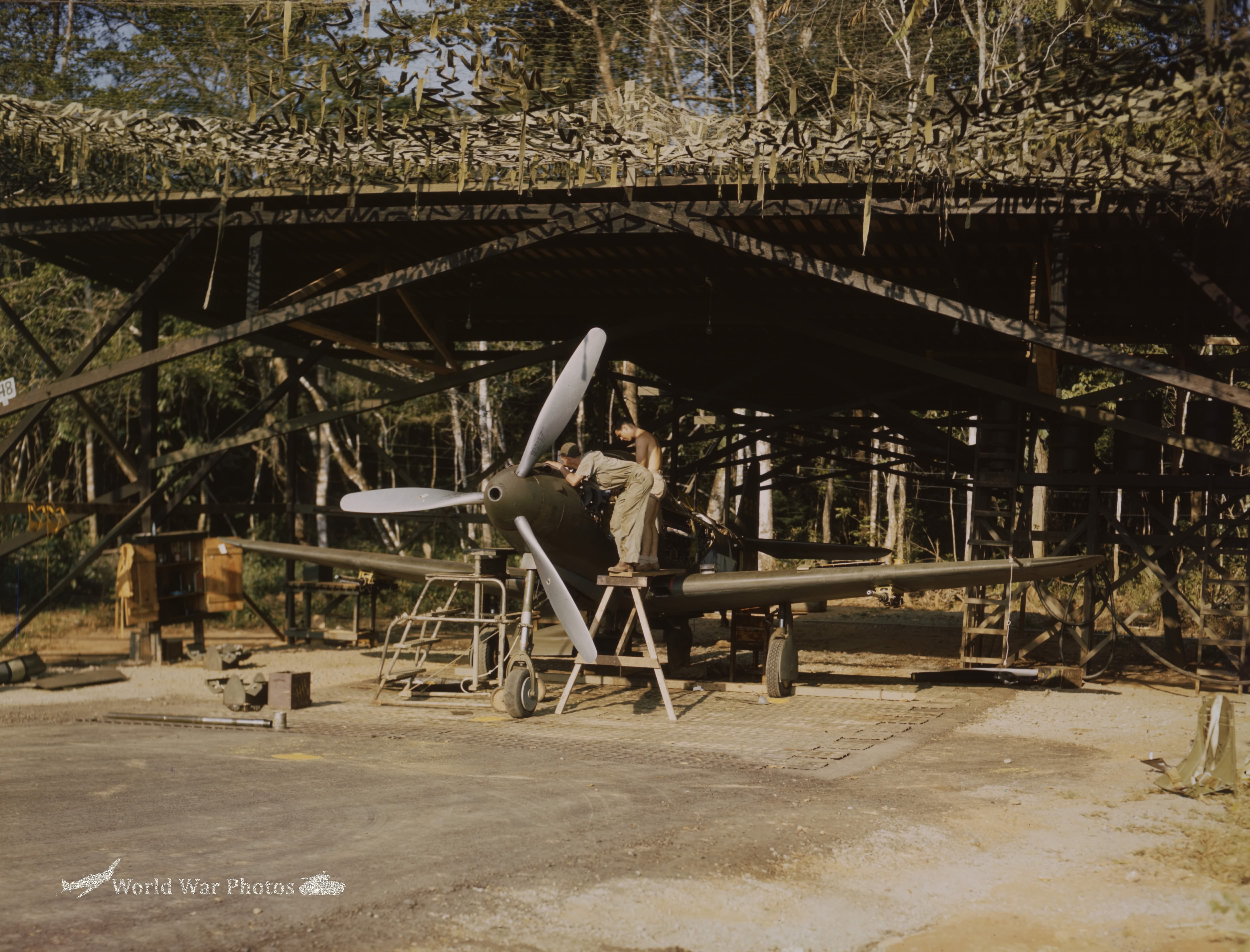The P-39Q was the final and most produced variant of the Bell P-39 Airacobra, with a total of 4,905 units delivered across eight production blocks. This variant marked significant changes in armament and design, reflecting the evolving needs of the combat theaters where the P-39Q was deployed, especially the Eastern Front where many were supplied to the Soviet Union.
Key Features and Modifications of the P-39Q:
Armament Changes:
- The most notable change from previous models was the removal of the .30-caliber machine guns in the wings. These were replaced by two detachable gun pods under the wings, each housing a single .50-caliber machine gun. However, many P-39Qs, particularly those operated by the Soviet Union, flew without these gun pods.
Engine:
- The P-39Q used the Allison V-1710-85 engine, similar to the P-39N, with six exhaust stubs on each side. This engine produced 1,200 horsepower.
Production Blocks:
- P-39Q-1-BE: The first block included 150 aircraft with a reduced internal fuel capacity of 87 gallons. Kits were provided to restore the fuel capacity to 120 gallons. Five of these aircraft were converted into reconnaissance models, designated P-39Q-2-BE.
- P-39Q-5-BE: A total of 950 units were produced with an increased internal fuel capacity of 110 gallons and lighter armor. 148 of these were converted into reconnaissance variants, designated P-39Q-6-BE.
- P-39Q-10-BE: 705 units were produced, restoring the full 120-gallon internal fuel capacity and increasing armor protection. These aircraft also had winterization features and coordinated engine controls, with eight being converted into reconnaissance models, designated P-39Q-11-BE.
- P-39Q-15-BE: 1,000 units were produced with minor changes, such as a reduction in the oxygen system from four bottles to two.
- P-39Q-20-BE: 891 units were produced with further minor equipment changes. The gun pods were standard on aircraft used by the USAAF and Free French but were often omitted on Soviet-operated aircraft.
- P-39Q-21-BE and P-39Q-25-BE: These blocks included 109 and 700 units respectively, both featuring four-bladed Aeroproducts propellers. Most of these were sent to the Soviet Union, where the gun pods were rarely used. The P-39Q-25-BE also had a reinforced aft fuselage and horizontal tail structure.
- P-39Q-30-BE: The final block of 400 units returned to using a three-bladed propeller, and this block marked the end of P-39 Airacobra production.
Operational Use:
- The P-39Q served extensively with various Allied forces. Over half of the total production was delivered to the Soviet Union, where it played a significant role in air combat on the Eastern Front. Other recipients included the Free French and Italian Co-belligerent Forces.
Technical Specifications:
- Maximum Speed: 385 mph at 15,000 feet.
- Rate of Climb: 4.5 minutes to 15,000 feet.
- Ceiling: 35,000 feet.
- Range: Maximum range of 1,100 miles and a combat range of 650 miles.
- Dimensions: Wingspan of 34 feet, length of 30 feet 2 inches, and height of 12 feet 5 inches.
- Weight: Empty weight of 5,645 pounds, gross weight of 7,700 pounds, and a maximum take-off weight of 8,350 pounds.
- Fuel Capacity: Internal fuel capacity of 120 gallons (with some blocks having reduced capacity) and an additional 175 gallons of external fuel.
The P-39Q was the culmination of the Airacobra series, incorporating various refinements and optimizations learned from earlier models. Its widespread use, especially by the Soviet Union, underscores its importance in World War II aviation history. The production of the P-39Q also paved the way for Bell Aircraft to transition to more advanced designs like the P-63 Kingcobra and the P-59 Airacomet, America’s first operational jet fighter.
